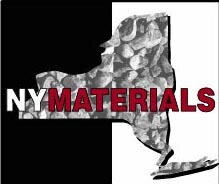The Aggregate Mining Process
Aggregate mining in New York takes two forms. The simplest process involves sand and gravel excavation. Sand and gravel are unconsolidated minerals that can be mined using a front-end loader or excavator then processed through crushers and screens to make the desired end product.
Excavator removing sand and gravel
Mining crushed stone is more involved because the deposits are consolidated, meaning solid rock formations. The most common types of crushed stone come from deposits of limestone, dolomite and granite. To produce crushed stone, the massive formation first is drilled with a pattern of holes loaded with explosives by a licensed blaster.
The “muck pile” right after blasting. Note the drill holes still visible in the background
Excavator loading a large haul truck to take stone to the processing plant
Following detonation, the material is loaded into trucks and hauled to the processing plant.
Processing involves a number of conveyors, crushers and screens
There, a series of crushers and screens are used to make the stone the proper size for the desired end use. Sometimes the crushed stone is washed as it passes over the screens.
Each conveyor represents a different size stone to meet customers needs.
Once stockpiled by size the sand and gravel or crushed stone is ready for delivery to customers.
Mining crushed stone is more involved because the deposits are consolidated, meaning solid rock formations. The most common types of crushed stone come from deposits of limestone, dolomite and granite. To produce crushed stone, the massive formation first is drilled with a pattern of holes loaded with explosives by a licensed blaster.





